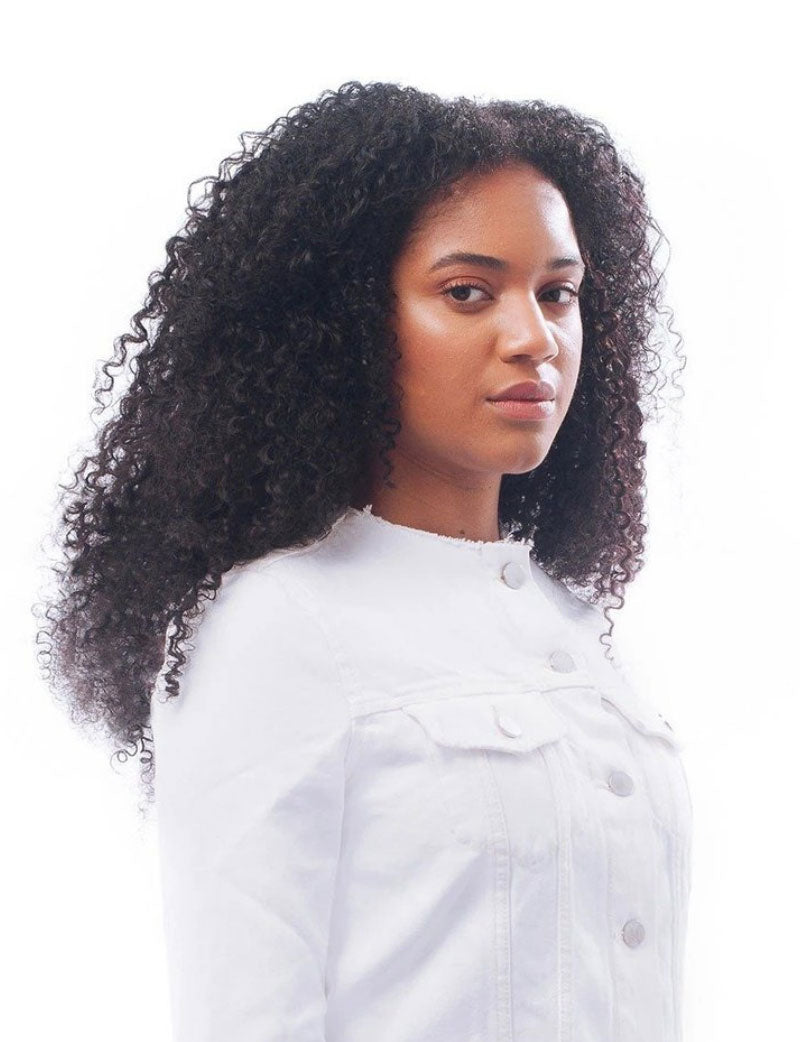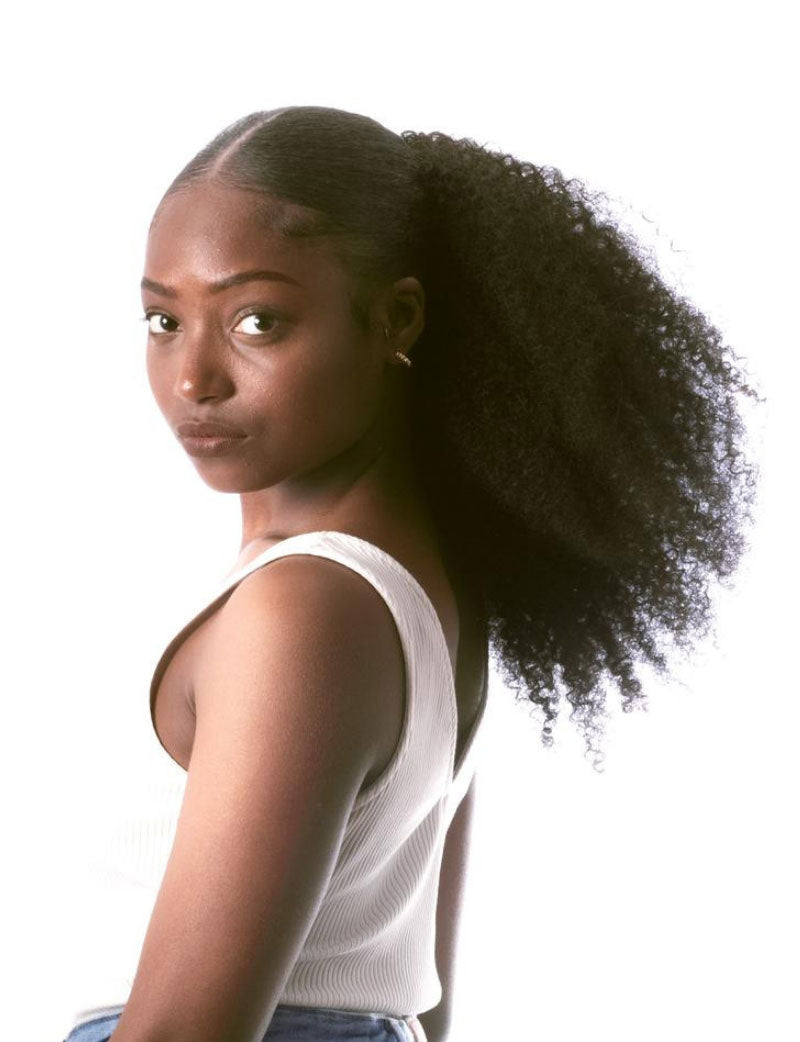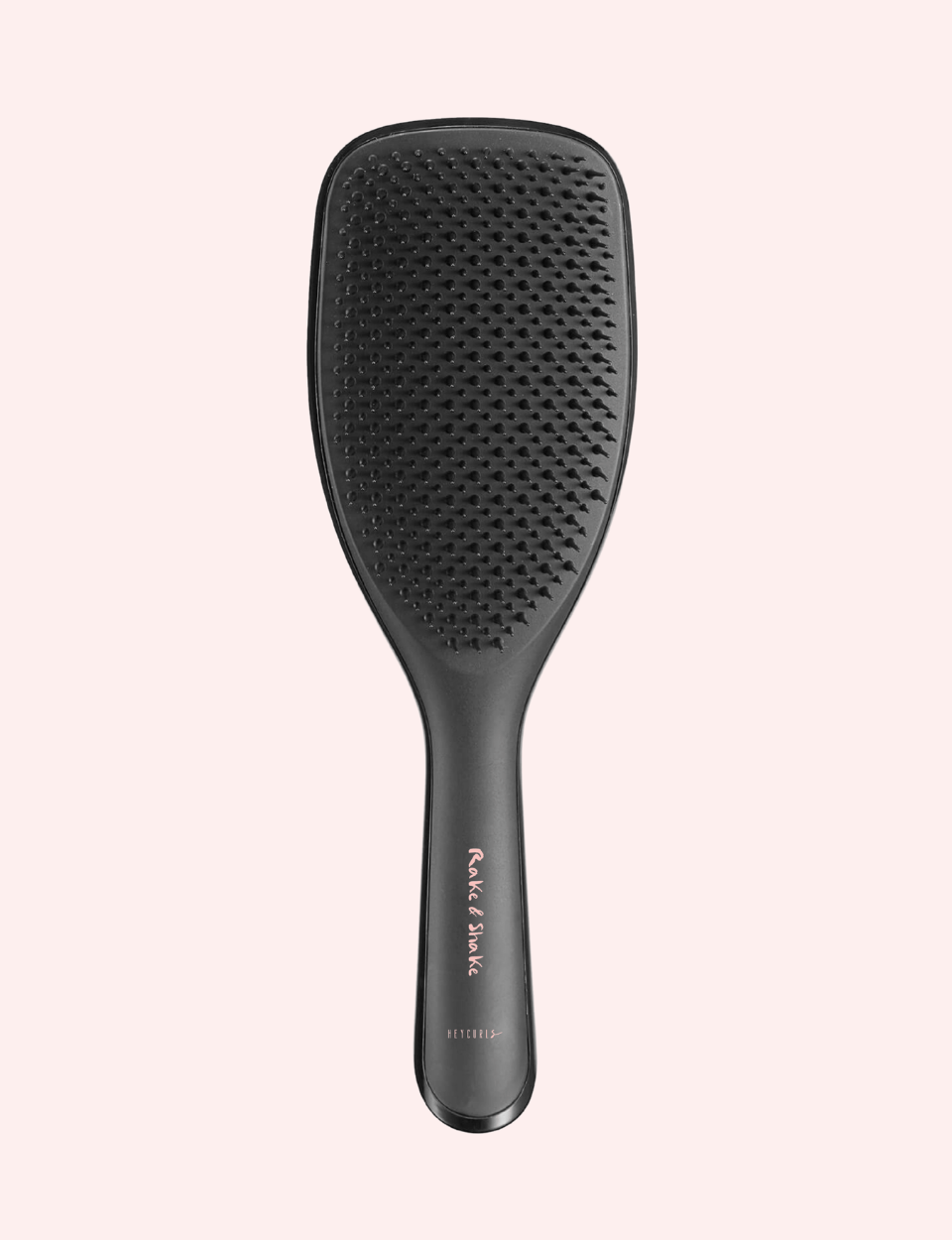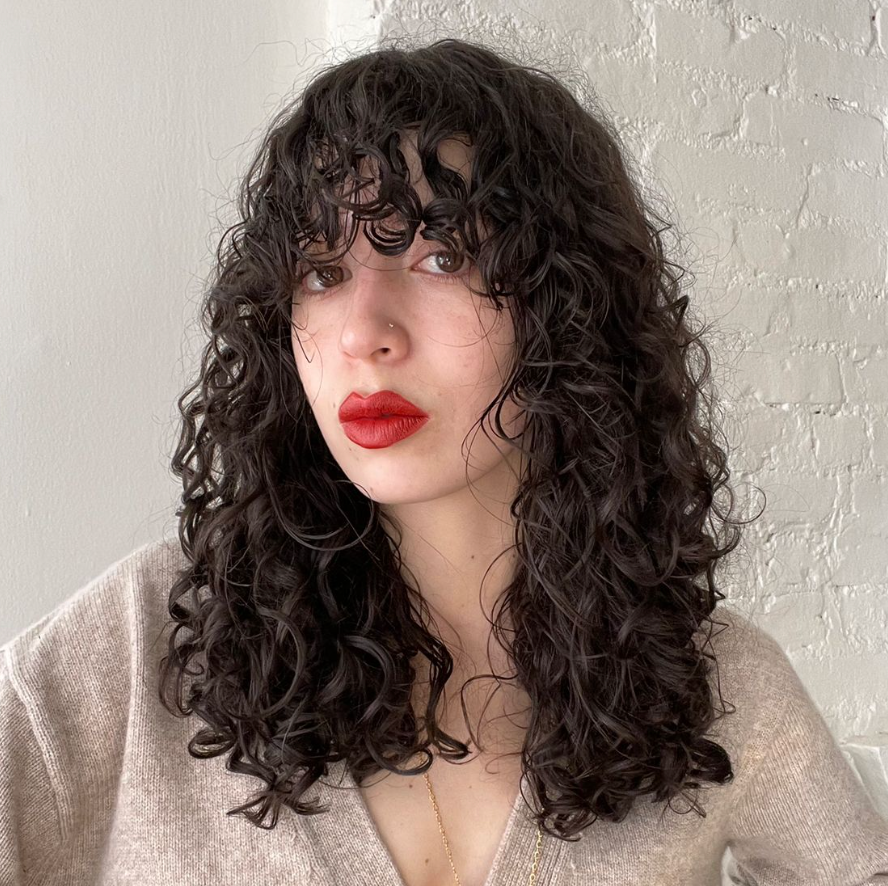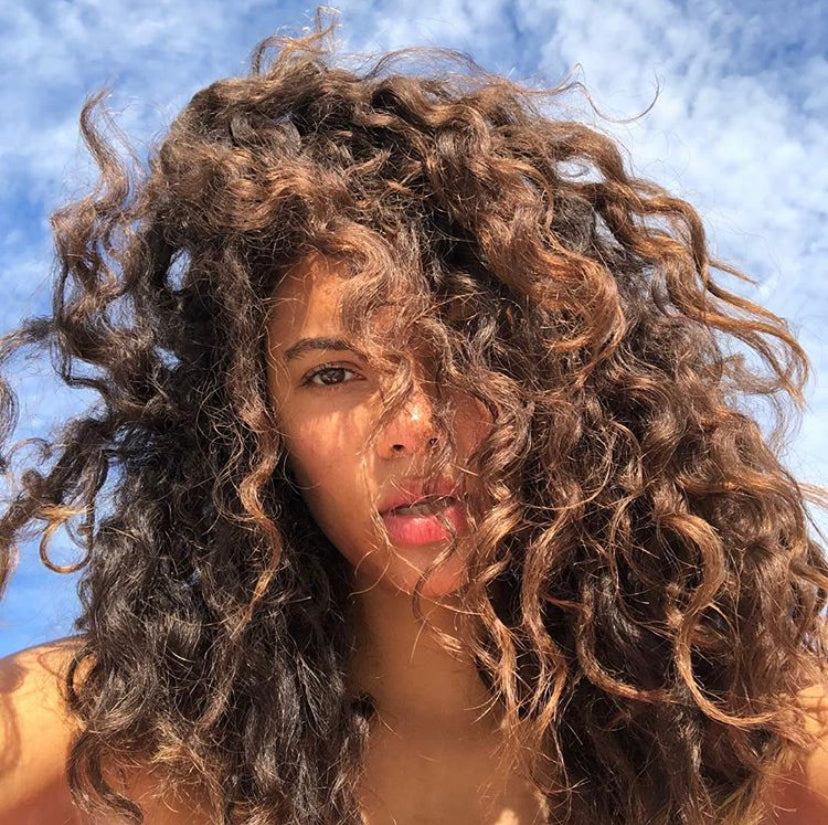Natural hair is making a comeback in a big way. But as more and more Black women and curly girls decide to embrace their natural hair texture, it’s important to understand how to care for it properly to keep curls looking fresh, and hair looking and feeling strong and healthy. Not only does this include following the right hair washing and styling routine for your curl type, but also a nighttime care routine to wake up to frizz-free curls that retain their shape overnight.
If you’re plagued with curly hair that experiences breakage, feels brittle, or tangles overnight, you may want to start wrapping it. Wrapping your hair is a great habit to form, as it helps curly hair retain its moisture, curl shape, and prevents frizz, breakage, and tangled bedhead. Wrapping your hair isn’t only reserved for bedtime—once you master the technique, there are all sorts of different, fashionable ways to wrap your hair for a day or night out on the town. But beware: while hair wrapping has a host of benefits for curly hair, improper wrapping can lead to the very thing you’re trying to avoid, which is why it’s important to follow the steps below.
By the way...hair wrapping isn’t just for curly hair. Those with relaxed, permed, or heat-styled hair can also benefit from hair wrapping to protect the hairstyle overnight and keep the hair sleek and smooth for longer.

In this article, we’ll talk about the benefits of wrapping your hair, as well as provide step by step instructions on how to wrap your hair to protect your precious curls overnight.
What is hair wrapping?
Hair wrapping involves smoothing out hair strands and setting it with a piece of fabric. It involves laying your hair close to your scalp by brushing it in a circular direction, then setting it with a silk or satin scarf to hold the style in place.
How to choose the right hair wrap
(add image of silk scarf - some sort of flat lay would be nice)
When choosing a hair wrap, it’s important to choose a silk or satin fabric. This is because silk and satin have tightly woven fibers that easily glide over curls, as well as help the hair retain moisture. Other fabrics, such as cotton, are more porous than silk. This means they actually suck moisture out of hair strands as well as pull and snag at the hair, causing breakage and tangling.
In terms of sizing, choose a large square scarf, as it’s easier to work with. Around 22-28 inches in length is a good general size to go by, but if you have a ton of hair or a smaller head, you may need to adjust the size accordingly. The key is not to have too much excess fabric dangling after wrapping, and to ensure that all your hair is covered.
Benefits of wrapping your hair
Reduces dryness
If you have curly or natural hair, you already know the dry hair woes that being a curly girl brings. Curly hair is naturally dry, due to the spiral or coiled shape of the hair strands. This means that oils from the scalp (also known as sebum) have a more difficult time travelling down the hair shaft when compared to straight hair strands. This results in dry hair, which is more prone to frizz and breakage. This especially comes to light overnight. If you’ve ever heard of your skin needing its beauty rest, the same goes for your hair. Keeping your curls protected helps the hair retain precious moisture, keeping them hydrated and healthy.
Keeps hairstyles intact
Sleeping on perfect curls, tossing and turning all night is a recipe to wake up to smashed, flattened, and frizzy curls. By wrapping your hair, you’ll keep your curls protected, so your morning refresh is that much easier. If your hair is relaxed or permed, this will also help protect the style for longer.
Reduces breakage and tangles
As we’ve mentioned, cotton pillowcases wreak havoc on curly hair. As you sleep, cotton pulls and snags at hair strands, leading to tangles in the short term and breakage in the long run. Wrapping your hair in silky fabric eliminates these pesky issues.
Is wrapping your hair healthy?
Yes! Wrapping your hair is a great way to help dryer hair types retain moisture and reduce frizz and breakage overnight. Because curly hair is naturally dry, wrapping your hair with a silk or satin scarf helps keep curls healthy, smooth, and strong.
Does wrapping your hair at night help?
Yes. Curly hair tends to take on a life of its own, especially while tossing and turning at night. Coupled with the fact that most people sleep on cotton pillowcases, waking up to frizzy, dry hair and smashed curls is quite common. Wrapping your hair at night will allow you to protect your curls in the long run.
How to wrap your hair in 5 steps
Hair wrapping can be used for style purposes or as a protective style at night. Regardless of the reason why you’re wrapping your hair, here are a few ways to prep your curls before wrapping.
1. Detangle your hair
(Add image of brushing hair)
Before even touching your scarf, make sure your hair is dry and tangle-free. Run a wide tooth comb through your hair from bottom to top, gently undoing any knots that may be present until the comb glides easily through your hair strands. You can also add a moisturizing hair oil like argan oil, coconut oil, or jojoba oil to add a boost of hydration, as well as slick flyaways and edges down to make the wrapping process easier.
2. Part your hair
A simple middle part will do!
3. Start the wrapping process

Now, when we say wrapping, we literally mean wrapping your hair around your head. The scarf will be the final step to hold the wrap in place. The goal is to wrap all your hair in a circle. Start in the middle, and using a comb or paddle brush, gently smooth the hair down one side as you wrap the hair around your head. Keep combing and wrapping until you’ve wrapped all your hair in a circle. If you have shorter hair, this may mean you’ll only get to the back of your head, which is fine. If you notice some shorter hairs falling out, feel free to bobby pin them down.
4. Repeat on the other side

Now, we’re going to combine the other side with the hair we just wrapped. Use your comb to smoothen down the hair as you keep wrapping around your head. Use bobby pins if you need to hold any hairs in place. At this point, your hair should resemble a small beehive hairstyle.
5. Set the style with a scarf

There are many different ways you can tie your headscarf, but this is the simplest way, and perfect for wrapping your hair overnight. Take your square scarf and fold it diagonally so you have a big triangle. Then, place the scarf on top of your wrapped hair carefully, with the flat end of the triangle at the front of your head. Take the two ends and wrap them around the back of your head, then bring the ends up to your forehead. Tie them in a knot, and you’re done!
If you have natural hair, we encourage you to give hair wrapping a try to keep your curls healthy and tangle-free. Be sure to let us know how it goes in the comments below!

